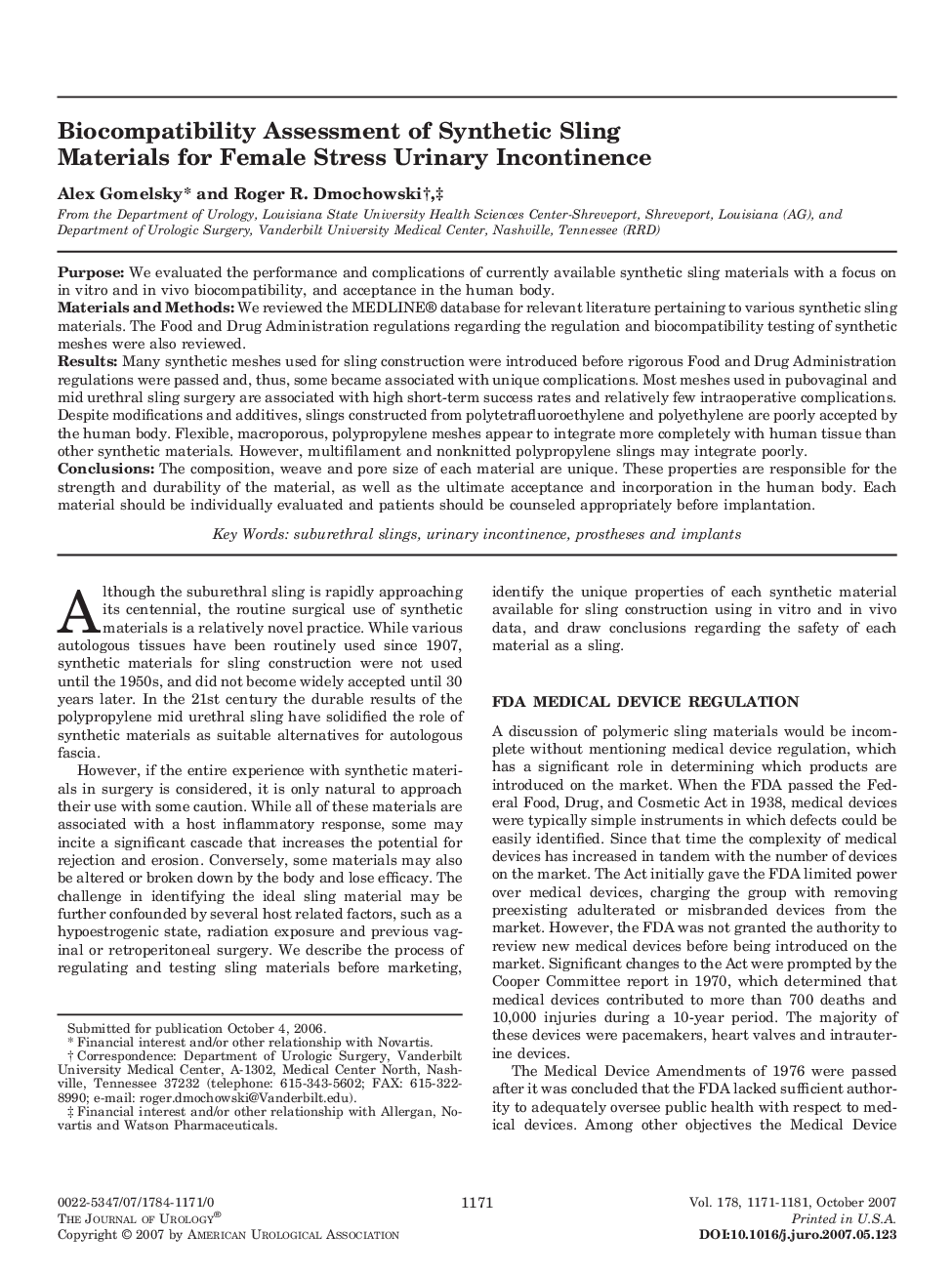| Article ID | Journal | Published Year | Pages | File Type |
|---|---|---|---|---|
| 3875575 | The Journal of Urology | 2007 | 11 Pages |
PurposeWe evaluated the performance and complications of currently available synthetic sling materials with a focus on in vitro and in vivo biocompatibility, and acceptance in the human body.Materials and MethodsWe reviewed the MEDLINE® database for relevant literature pertaining to various synthetic sling materials. The Food and Drug Administration regulations regarding the regulation and biocompatibility testing of synthetic meshes were also reviewed.ResultsMany synthetic meshes used for sling construction were introduced before rigorous Food and Drug Administration regulations were passed and, thus, some became associated with unique complications. Most meshes used in pubovaginal and mid urethral sling surgery are associated with high short-term success rates and relatively few intraoperative complications. Despite modifications and additives, slings constructed from polytetrafluoroethylene and polyethylene are poorly accepted by the human body. Flexible, macroporous, polypropylene meshes appear to integrate more completely with human tissue than other synthetic materials. However, multifilament and nonknitted polypropylene slings may integrate poorly.ConclusionsThe composition, weave and pore size of each material are unique. These properties are responsible for the strength and durability of the material, as well as the ultimate acceptance and incorporation in the human body. Each material should be individually evaluated and patients should be counseled appropriately before implantation.
